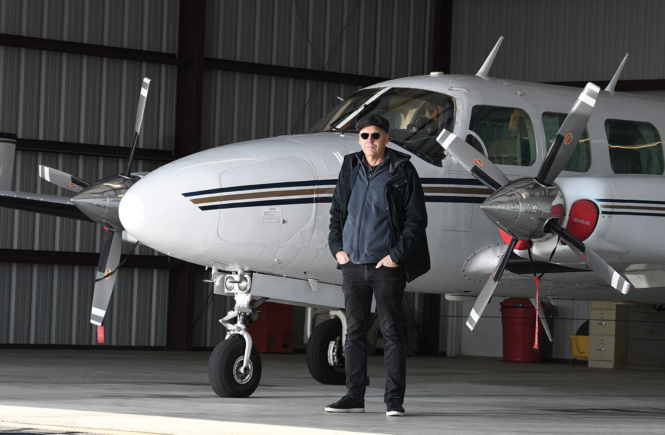Brian Seeba has seemingly flown just about anything with wings — and that’s just the way he likes it
Interview by Alison Pappas | Photo by Grant L. Gursky
AP: What is your background in aviation?
BS: I spent the first 30 years of my career flying in my home state of Minnesota. Over those three decades, I worked mostly as a pilot for corporate jets and charter planes. I also flew an air ambulance for a while during that period.
In the fall of 2000, I made the move to Salisbury and spent 10 years as a flight instructor working with Andy Serrell, a local World War II veteran who continued flying into his 80s and passed away in 2018 at the age of 94. Alongside Andy, we trained and educated many up-and-coming pilots.
AP: What made you want to be a pilot?
BS: My great uncle, who was also a pilot, took me for a ride in a two-seater airplane in the 1950s, when I was just a small child. I think the joy I experienced during that first ride really sparked my initial interest, and I’ve had a passion for flying ever since.
AP: Are there are any particularly memorable flights you’ve piloted?
BS: I’ve flown in 46 of the 48 contiguous United States, and there have been many notable flights I’ve experienced along the way. One trip that was particularly memorable occurred somewhere around 1980, when I flew a two-seater puddle-jumper plane from North Dakota to Arizona and back. The trip ended up being a four-week adventure, and I made several stops along the way to visit family members. The duration and distance of the trip allowed me to fly through many different climate types.
AP: You once had to make an emergency landing during one of your local flights. What was that experience like?
BS: Well, I was flying a “Red Baron” ride plane when suddenly I knew something was wrong. Specifically, I could feel that there was a problem with the engine, so I immediately turned back. Unfortunately, the plane’s failing engine couldn’t make it back to the airport, so I had to make a forced landing on Assateague Island. I remained intensely focused until the plane officially hit the sand. The conditions — low tide and firm, wet sand — were optimal for this type of emergency descent, and I was able to land safely. Fortunately, no one, including me, was hurt.
AP: What advice would you give new pilots?
BS: The main advice that I would give is to pursue every pilot-rating opportunity that presents itself to you, even if you don’t think you’ll need it or use it. You never know what new doors ratings can potentially open for you.

